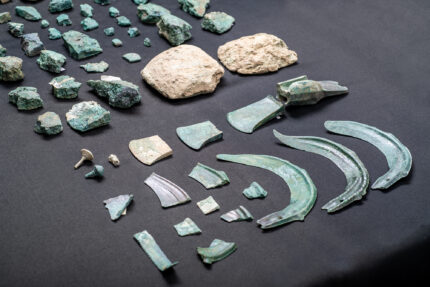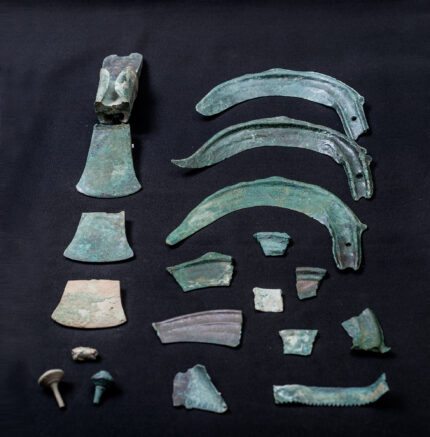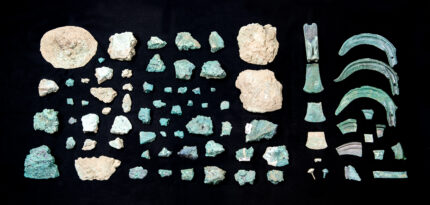 Archaeologists excavating an ancient Roman battle site in the Oberhalbstein Alps have discovered a Late Bronze Age metal hoard containing more than 80 bronze objects weighing a total of 20 kg (44 lb). Found in a field just south of a prehistoric settlement on a transalpine trade route, the hoard dates to the 12th or 11th century B.C. It is the largest and most important Bronze Age hoard ever found in the Graubünden canton.
Archaeologists excavating an ancient Roman battle site in the Oberhalbstein Alps have discovered a Late Bronze Age metal hoard containing more than 80 bronze objects weighing a total of 20 kg (44 lb). Found in a field just south of a prehistoric settlement on a transalpine trade route, the hoard dates to the 12th or 11th century B.C. It is the largest and most important Bronze Age hoard ever found in the Graubünden canton.
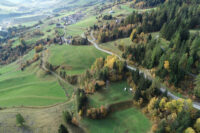 Hundreds of Roman sling bullets, hobnails, a richly decorated dagger and other military equipment have been found at the site near the modern-day municipality of Surses since 2003. The sheer quantity of projectiles, weapons and gear from the Augustan era identify it as the location of a large-scale military action between the local Suanetes tribespeople and three Roman legions led by future emperor Tiberius and his brother Drusus in 15 B.C. This is the only proven Roman battlefield in Switzerland. The remains of the Roman military summer camp they established to control the strategically important Septimer Pass were discovered in 2008.
Hundreds of Roman sling bullets, hobnails, a richly decorated dagger and other military equipment have been found at the site near the modern-day municipality of Surses since 2003. The sheer quantity of projectiles, weapons and gear from the Augustan era identify it as the location of a large-scale military action between the local Suanetes tribespeople and three Roman legions led by future emperor Tiberius and his brother Drusus in 15 B.C. This is the only proven Roman battlefield in Switzerland. The remains of the Roman military summer camp they established to control the strategically important Septimer Pass were discovered in 2008.
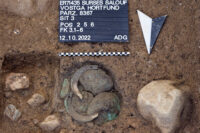 In 2021, ADG launched a new research project to systematically examine the landscape for remains of the conflict between Rome and the Suanetes. The Bronze Age hoard was discovered as part of this project. The Archaeological Service of Graubünden (ADG) unearthed the hoard in October 2022 after a volunteer metal detectorist surveying the site alerted the team to its presence. The objects were densely packed inside a small, well-defined pit indicating they had been deposited inside a wooden box that was wrapped in leather and buried in the ground.
In 2021, ADG launched a new research project to systematically examine the landscape for remains of the conflict between Rome and the Suanetes. The Bronze Age hoard was discovered as part of this project. The Archaeological Service of Graubünden (ADG) unearthed the hoard in October 2022 after a volunteer metal detectorist surveying the site alerted the team to its presence. The objects were densely packed inside a small, well-defined pit indicating they had been deposited inside a wooden box that was wrapped in leather and buried in the ground.
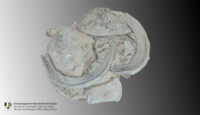 Most of the metal objects are cast cakes, raw copper chunks that were used in the production of metal objects in the Alpine region. Other artifacts include sickles, axes, saw fragments and jewelry parts. They were damaged deliberately, “killed” before being buried as an offering.
Most of the metal objects are cast cakes, raw copper chunks that were used in the production of metal objects in the Alpine region. Other artifacts include sickles, axes, saw fragments and jewelry parts. They were damaged deliberately, “killed” before being buried as an offering.
The sensational discovery of what is by far the most extensive and important repository to date is a great moment for Graubünden archaeology. “The comprehensive scientific investigation that will now follow of this find, which is unique in our area, will certainly provide far-reaching insights into late Bronze Age cultural, economic and landscape history,” says Graubünden canton archaeologist Thomas Reitmaier with conviction. “It also underscores the potential of large-scale archaeological prospecting and collaboration with volunteer probers.
